Covid is currently rampant in China – at least according to the standards of the People’s Republic. Since the original outbreak in Wuhan more than two years ago, infection numbers in China have not been this high. Several cities of millions have been placed under lockdown, and schools have been closed. Starting March 21, international flights to Shanghai will be diverted to other regions for the next six weeks. Omicron is the decisive test for China’s Zero-Covid policy.
In today’s issue, Finn Mayer-Kuckuk analyzes the causes and effects of Hong Kong’s high number of deaths. The high mortality rate can mainly be attributed to the low vaccination rate among the elderly. This conclusion is a red flag for Mainland China. Many elderly Chinese lack sufficient immunization. And China’s vaccines are not effective enough against the Omicron variant. This is partly due to Beijing’s rejection of foreign mRNA vaccines. Will there now be a change in thinking?
The People’s Republic is striving for as much independence as possible when it comes to securing a stable food supply. Xi Jinping has repeatedly warned that the global market could not feed 1.4 billion people. Nevertheless, China obtains more than five percent of its own grain production from Ukraine. But it is not only the war that worries Beijing. Ozone pollution and climate change are also affecting its food production, writes Ning Wang.

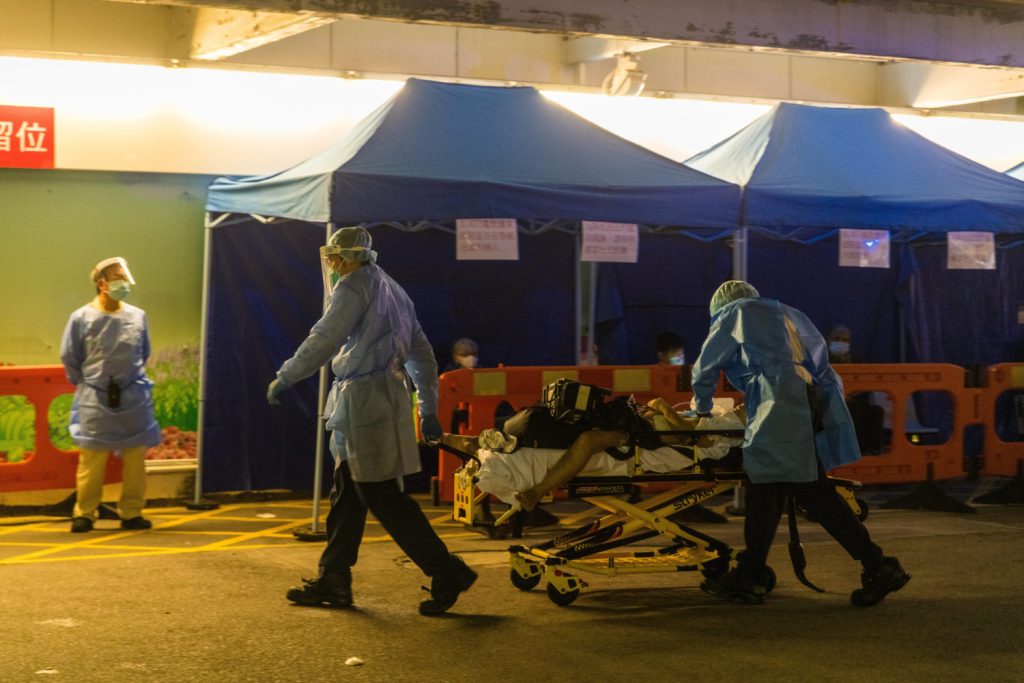
German virologist Christian Drosten considers the current situation in Hong Kong highly interesting from a scientific point of view. In hardly any other highly developed, statistically well-monitored region with a solid healthcare system is the vaccination rate among elderly citizens this low. Whereas in Germany or Japan more than 90 percent of its oldest citizens are vaccinated, the rate in Hong Kong at the beginning of the Omicron wave was only 34 percent – for the first vaccination. Only a little over 20 percent are fully vaccinated, let alone received the second jab. As a result, one in twenty infected Hong Kong residents is currently dying.
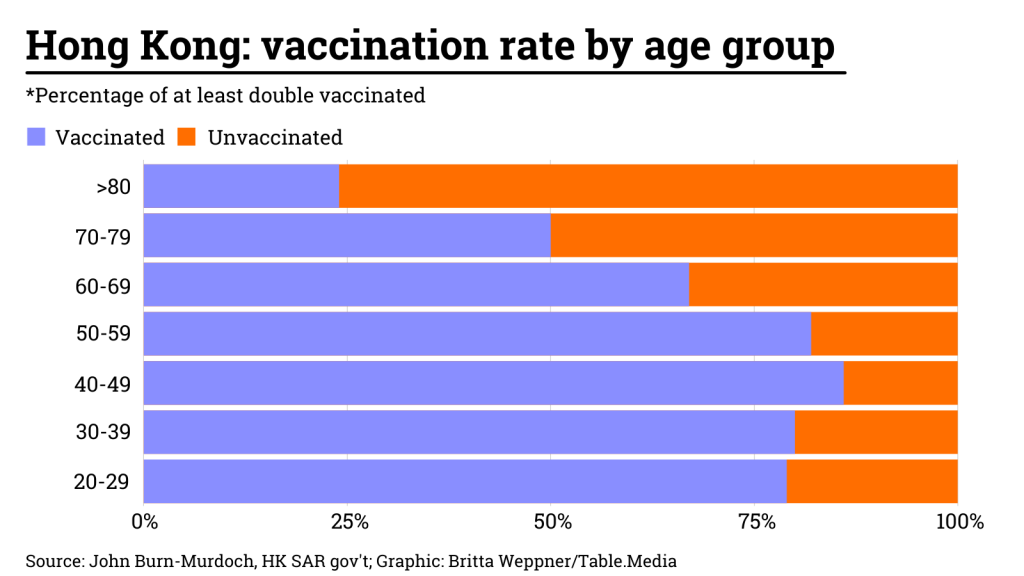
For Drosten, the situation in Hong Kong is particularly telling because it provides insight into the Omicron variant of the pathogen. In the beginning, it was not entirely clear: Is it really less dangerous? Or is it less lethal in South Africa and Europe than previous variants because it has hit a population with adequate basic immunity in vulnerable groups?
Data from the Far East now give Drosten the answer: “Hong Kong shows as expected: Omicron is not mild among unvaccinated elderly.” These are further data points that debunk the myth of the friendly Covid variant. Indeed, younger people, in particular, tend to get less sick from Omicron. But for the unprotected elderly, an infection is dangerous. The fact that we are not currently experiencing overwhelmed hospitals in Germany like in Hong Kong, is not because of the supposedly harmless Omicron. It’s because of vaccinations.
But the data from Hong Kong is not only interesting for Germany. They are also a warning sign for Mainland China, because Omicron is currently gripping its population (China.Table reported). And only about 50 percent of Chinese over 80 are fully vaccinated. They have also not received highly effective mRNA vaccines, but less effective inactivated vaccines (China.Table reported). In addition, in some cases, vaccinations were administered several months ago. We now know that protection decreases rapidly. This means that China’s population is similarly vulnerable as Hong Kong’s.
But so far it is Hong Kong that is becoming the textbook case of a failed pandemic policy. And this is true both from the perspective of the People’s Republic, with its Zero-Covid approach, and from the perspective of European countries, with its ongoing contagion. Strict Zero-Covid has left Hong Kong with a population that barely perceived the virus as a threat, but in fact, has little immunity. While the government has always stuck to Zero-Covid and formally has done everything right (China.Table reported). But Omikron was just too contagious for a tendentiously carefree population.
But the biggest failure is the unsuccessful vaccination campaign. While the middle-aged groups were convinced to take the jab, the elderly, of all groups, remained skeptical. Yet they are the ones to whom Omicron continues to pose a risk. As a result, Covid mortality is now higher in Hong Kong than it has ever been in the UK. The mortality rate in relation to population exceeds that of previous peak countries such as Italy, Portugal, and Namibia at the height of their respective worst waves.
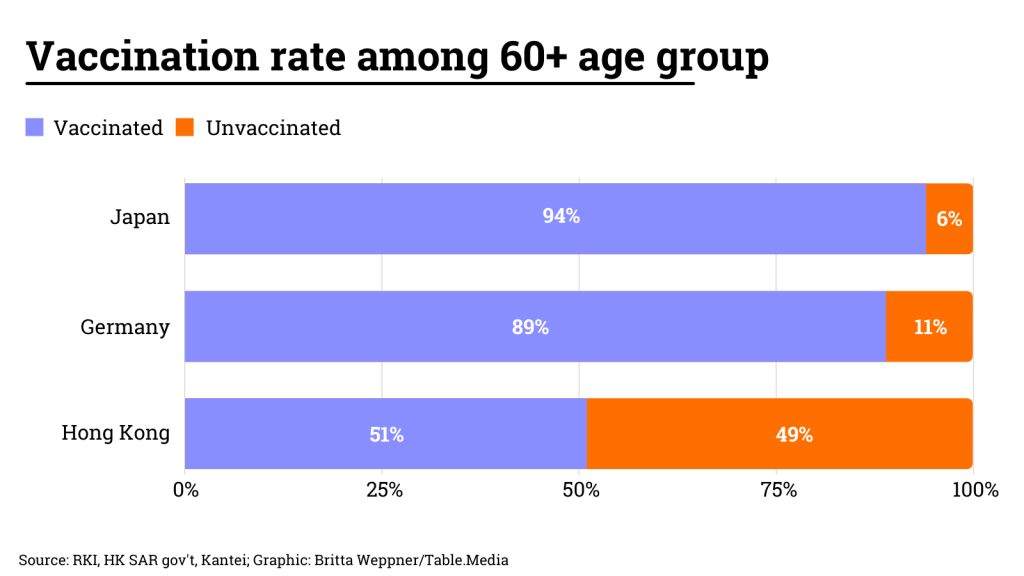
British data journalist John Burn-Murdoch primarily compares Hong Kong to other tightly governed Asia-Pacific countries, rather than to Covid-negligent Europeans. He sees a tragedy in the numbers. While South Korea, Japan, Singapore, and New Zealand have gotten through the pandemic with almost no deaths, Hong Kong is now experiencing a surge in deaths. And all because of a lack of vaccinations. Yet it is usually smaller administrative units that achieve effective vaccination results.
There is only one possible conclusion for China: It cannot do without a new vaccination campaign. Either with an updated inactivated vaccine – or with mRNA. Players on the stock markets apparently had a similar train of thought over the past few days. Biontech and Moderna shares surged by a fifth. Biontech already has contracts with the Beijing-based Fosun Group. However, these have not yet materialized (China.Table reported). The development of the company’s own vaccine is only making slow progress. This is hardly surprising, as the technology is new, revolutionary, and difficult to control. This could very well now lead to a change in thinking. Biontech could sell licenses for several billion doses to China, after all.
In the short term, Beijing will therefore suppress its current outbreaks with tried-and-tested means – no matter the cost. After all, freedom from Covid is currently the kind of freedom that the government can offer its people. An uncontrolled outbreak would result in a historic loss of face. The hoped-for normalization after the Olympics will not happen after all.
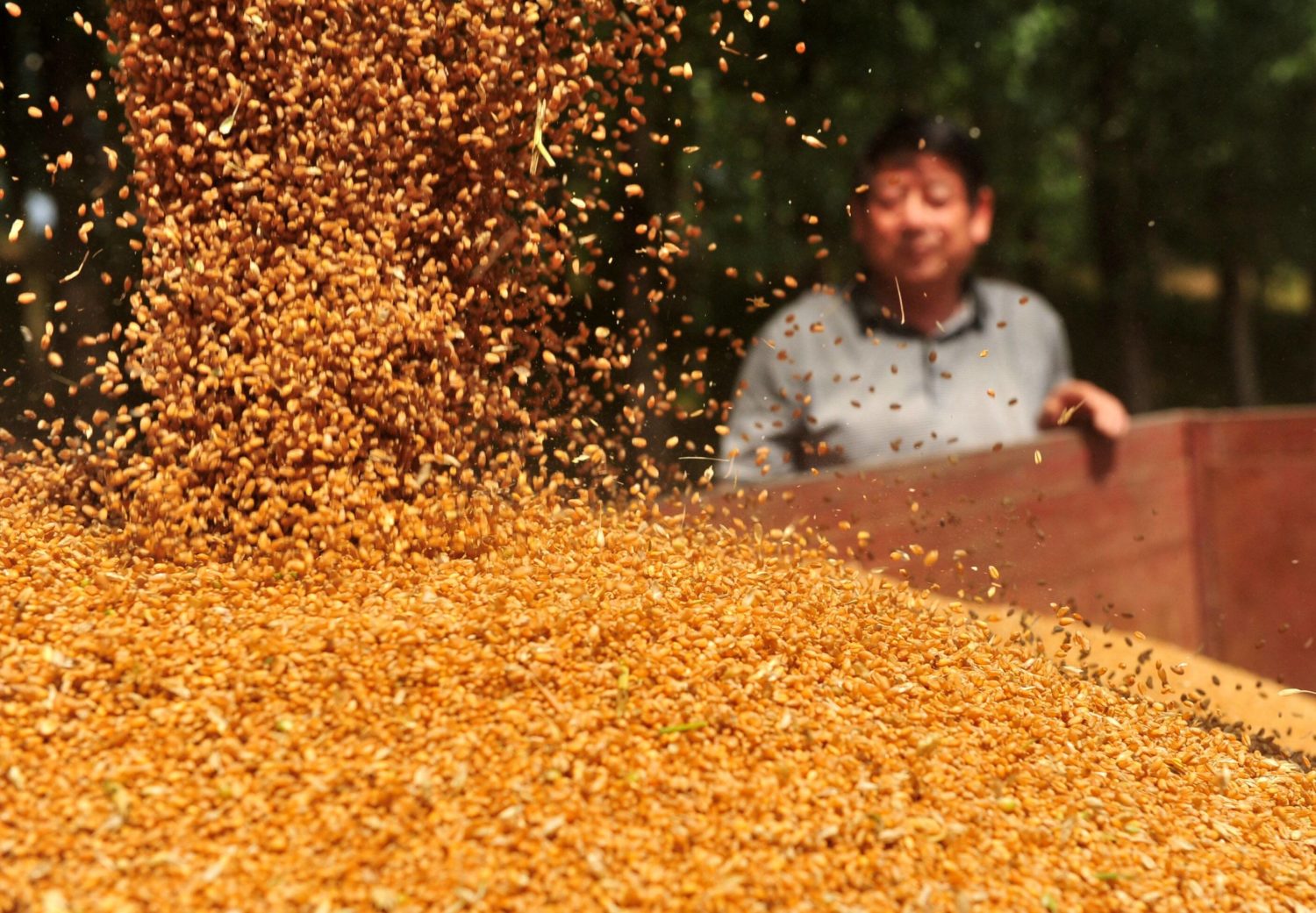
China has always been concerned about its food supply. Over the past few years, Xi Jinping has regularly urged vigilance despite good harvests. Food self-sufficiency is high on the agenda of political leaders (China.Table reported). Russia’s invasion of Ukraine also affects one of the People’s Republic’s largest agricultural trading partners and is likely to cause more headaches in Beijing’s. This is because food supply is at risk on multiple fronts.
China has only ten percent of the world’s agricultural land, but has to feed more than 20 percent of the global population with it. Despite the geographical limitation, the People’s Republic is one of the world’s largest food producers. For example, production of cereals, including corn and rice but excluding pulses and potatoes, was 632 million tons, up by 2.6 percent from the previous season. Wheat production also increased by two percent to 136 million tons, more than any other country in the world. But several factors threaten the productivity of arable land.
Apart from climate change (China.Table reported), air pollution is also negatively affecting crop yields in the People’s Republic. A recent study shows that burning fossil fuels increases the concentration of ground-level ozone, which, in turn, damages crops. The authors of the study estimate that ozone pollution reduced wheat yields by 33 percent between 2017 and 2019. Harvests of other staple crops, such as corn and rice, have also declined as a result of ozone pollution. The authors estimate that the relative yield decline of wheat (33 percent), rice (23 percent) and corn (9 percent) in China, Japan and South Korea results in $63 billion in crop damages annually. An international team of scientists came to this conclusion after analyzing data on ozone concentrations above the surface between the years 2017 and 2019.
According to study author Zhaozhong Feng of the Nanjing University of Information Science and Technology, surface ozone concentrations in China have increased by about five percent every year. “Such a rapid increase in surface ozone has increased the ozone risk to crop yields,” Feng said at the presentation of the paper’s findings.
“Ground-level ozone is formed by air-chemical processes when the following ‘ingredients’ combine: nitrogen oxides, hydrocarbons and sunlight. Combustion-engine vehicles are an important source of both nitrogen oxides and hydrocarbons,” says Astrid Kiendler-Scharr, Institute Director for Energy and Climate Research at Forschungszentrum Julich. “Since ozone is not directly emitted and is formed from these precursors, reducing ozone pollution requires reducing the emission of precursors,” Kiendler-Scharr told China.Table.
China lost $52 billion worth of wheat and rice crops annually from 2017 to 2019 from ozone pollution in the country alone, when in fact, it could harvest 20 percent more wheat and 10 percent more rice if the concentration of ground-level ozone were cut by half. However, even though Beijing has been working hard to reduce air pollution in recent years and has made good progress (China.Table reported), ground-level ozone concentrations have increased.
“The Chinese government is already working on a systematic plan to reduce surface ozone concentrations,” Feng told Sixth Tone, without going into details. Last November, the State Council pledged to reduce the amount of volatile organic compounds mainly emitted by the petroleum and chemical sectors, as well as nitrogen oxides, by at least 10 percent compared to 2020 levels by 2025 to halt the rise of ground-level ozone pollution.
However, Chinese, American and scientists from Forschungszentrum Julich have already shown in 2018 that China is a global “ozone hotspot“. The institute analyzed the world’s most comprehensive database of ground-level ozone readings of all available data since 1975.
“In the assessment report of the Intergovernmental Panel on Climate Change (IPCC), we look at both how air pollutants affect climate change and the extent to which air pollution issues change as climate change increases,” says Kiendler-Scharr, who is also lead author of the 6th IPCC report. For China, she predicts that as temperatures rise, ground-level ozone pollution will increase. “The higher the temperature shift, the greater the increase in ozone will be.”
Recently, China has been buying massive amounts of grain on the global market to meet its demand for wheat, corn and rice. Only at the beginning of the year did the prices for corn, rice or wheat rise sharply. Russia’s attack on Ukraine has increased prices even further. As the German news magazine Der Spiegel reported, China is currently even withholding a report from the UN’s Food and Agriculture Organization (FAO) about a possible imminent food crisis. The reason: FAO Secretary-General Qu Dongyu is Chinese. The government in Beijing does not want to stir up even more unrest on the global grain markets, speculates Der Spiegel.
As early as last summer, the United Nations food agency warned that the price of food imports for low-income countries could rise by as much as 20 percent before the end of 2021. China was not directly named as a cause of the rising prices. However, it is clear that the People’s Republic played a large part.
This is because Beijing already began filling up its granaries some time ago. According to calculations by the US Department of Agriculture, China will store 69 percent of the world’s corn reserves, 60 percent of rice reserves and 51 percent of wheat reserves in its strategic state reserves by the middle of this year.
Just one day after the National People’s Congress began two weeks ago, state and party leader Xi Jinping stated that China could not rely on international markets to ensure food security. Thus, China’s filled reserves also serve as a safeguard against future uncertainties and fluctuations on the international market.
This step is proving to be farsighted. This also became clear at this year’s National People’s Congress. There, China’s Minister of Agriculture Tan Renjian warned that his country is threatened with a poor harvest of winter wheat (China.Table reported). Beijing itself guards the exact volume of its strategic reserves like a national secret. But most recently, a high-ranking official had to reveal that the country’s wheat reserves were still sufficient for another year and a half.
China has supplied liquefied natural gas (LNG) from the United States to Europe. Unipec, the trading arm of China’s state-owned oil and gas company Sinopec, resold three shipments to ports in Europe and turned a profit, Bloomberg reports.
The resale of gas to Europe reveals the impact of high energy prices on global trade flows. This is because China is now the largest importer of LNG gas. The People’s Republic’s gas demand is also rising. LNG is expected to play a greater role in the medium term to reduce coal consumption and achieve the People’s Republic’s climate targets.
Last week, natural gas prices in Europe rose to a new high. The cause is uncertain supplies from Russia. The price increase prompted Unipec traders to turn away from the lower-priced Chinese market, according to Bloomberg. This is particularly surprising given that Beijing had recently ordered importers to secure imports of energy commodities and food (China.Table reported). nib
Following Russia’s invasion of Ukraine, more and more Taiwanese citizens are ready to defend their country in the event of an invasion. This is according to a new study by the Taipei-based Taiwan International Strategic Study Society. 70.2 percent of the 1,076 surveyed stated that they were willing to defend the self-governing island from an attack from mainland China. The last comparable study was conducted in late December. At that time, only 40.3 percent of respondents declared their will to fight.
The survey also reflects the decline in confidence in the United States. While 55.1 percent of respondents in October 2020 still believed the US would come to Taiwan’s aid in an emergency, only 42.7 percent still believe this now. At the same time, more citizens than ever were in favor of a general overhaul of the army reserve and an expansion of the basic military training already in place.
The United States – Taiwan’s informal ally – had repeatedly urged Taiwan to revise its conscription system to better prepare the island for a possible Chinese assault. The government of President Tsai Ing-wen is currently considering extending military service for men between the ages of 18 and 38 from four months to at least one year. Currently, military service in Taiwan is divided into two phases for all drafted men: Five weeks of basic training in field camps are followed by eleven weeks of advanced training in respective military units. fpe
Saudi Arabia and China are currently in “active talks” to settle oil sales in yuan instead of US dollars in the future, according to a Wall Street Journal report. About 80 percent of global oil sales are currently denominated in dollars. Oil imports in the Chinese currency could weaken the role of the dollar and thus US political influence in the long term.
China currently buys more than 25 percent of Saudi Arabia’s oil exports. According to data from China’s Customs Administration, the country was China’s top crude oil supplier last year with 1.76 million barrels per day, followed by Russia with 1.6 million barrels.
For well over six years, Beijing has been pushing to set oil contracts with Saudi Arabia in yuan. Recent developments have accelerated as the Saudis have become increasingly displeased with US security policy in the region, writes the Wall Street Journal. Examples include the lack of US support for Saudi intervention in the civil war in Yemen and Biden’s willingness to reach an agreement with Iran over its nuclear program. Many Saudis also considered the US withdrawal from Afghanistan last year to be rushed.
A senior US official cited by the Wall Street Journal called the idea that the Saudis might trade oil in yuan “not very likely.” In the past, the Saudis have repeatedly eyed the possibility of moving away from the dollar whenever there has been tension between Washington and Riyadh. Saudi Arabia has traded its oil exclusively in US dollars since signing a deal with Nixon in 1974. fpe
For the first time in over 20 years, China’s two major development banks have not allocated money for overseas energy projects in 2021. That is according to a Boston University study. Over the past two decades, the China Development Bank (CDB) and the Export-Import Bank of China (Exim) have been among the largest bilateral lenders for power plants and energy infrastructure abroad.
Since 2000, they have extended $234 billion in loans to foreign governments or state-owned enterprises in the energy sector. Since 2016, $75 billion have been granted alone, far surpassing World Bank lending. Since then, however, approvals have declined rapidly.
As recently as September 2021, Xi Jinping announced that China would no longer finance the construction of coal-fired power plants overseas. The People’s Republic was the last major backer of such projects. Boston University researchers speculate that China will rely more on direct investment rather than loans for energy projects. China has already scaled back its foreign lending activities.
Beijing fears a “creditor trap” (China.Table reported), as many loan-financed projects are not generating profits and repayment is uncertain. Researchers also believe it is unlikely that China will abandon its leadership role in global energy financing. They believe that an increase in financing can be expected again in the future. nib
China’s Ministry of Industry has granted Evergrande New Energy Vehicle Group permission to sell EVs. Two models of the subsidiary of the heavily indebted real estate developer Evergrande have received official approval. They may now be sold under the brand name Hengchi, as reported by the business portal Caixin.
Evergrande NEV has yet to sell a single car. The company’s lofty plans have suffered repeated setbacks. Some analysts speculate that the plans to expand into the auto sector are partly to raise funds for the troubled parent company, Caixin reports. Evergrande planned to invest up to seven billion US dollars in car manufacturing. Industry insiders say it will not be easy for Evergrande to gain a foothold in China’s already crowded EV market. nib
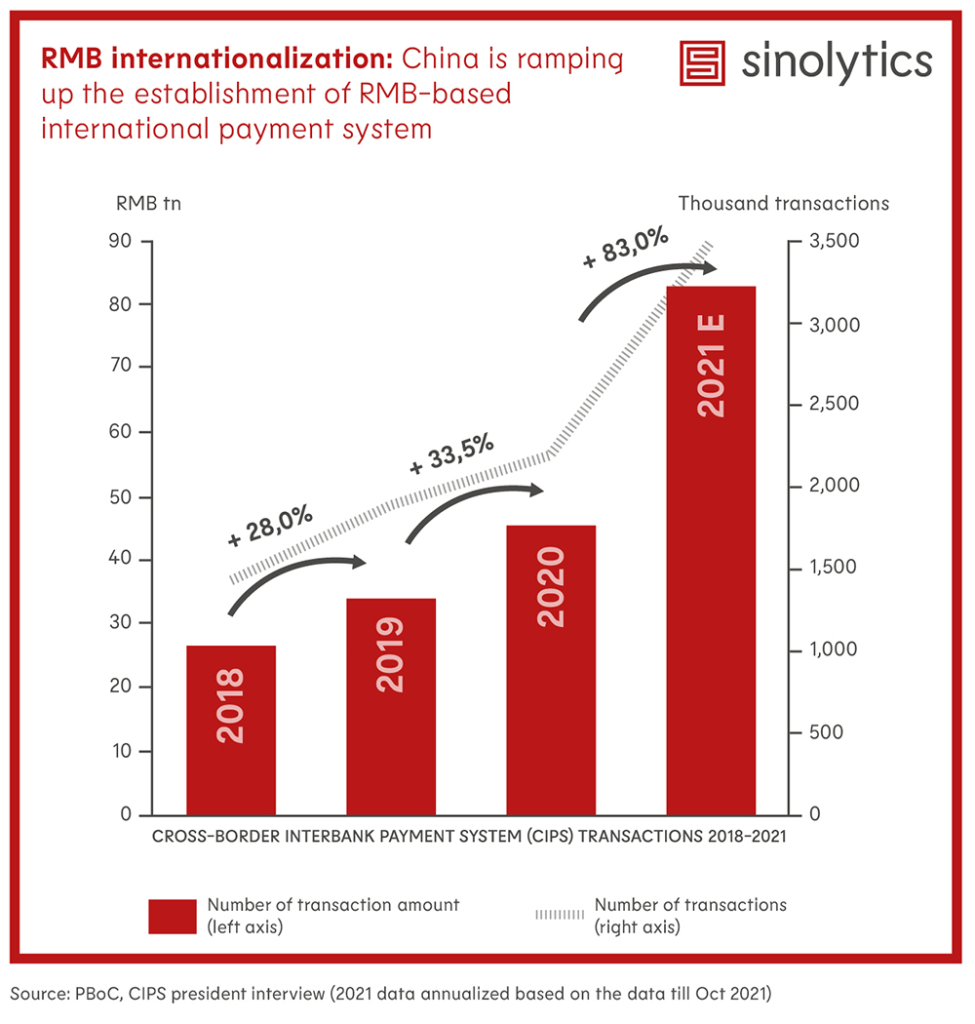
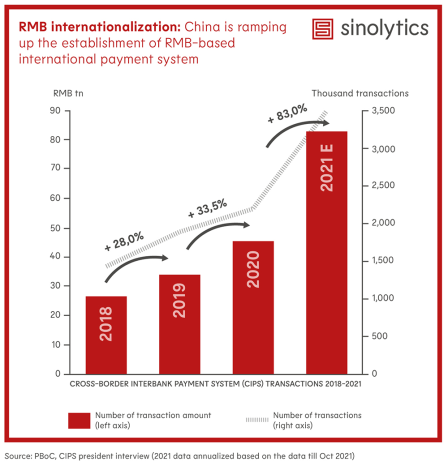
Sinolytics is a European consulting and analysis company specializing in China. It advises European companies on their strategic orientation and concrete business activities in the People’s Republic.

Shahnura Kasim spends a lot of time on social networks. TikTok, Instagram and the like are popular meeting places for young people. Kasim is 19 years old, lives in Germany and is currently studying for her Abitur (high school diploma). Like many of her peers, she posts diligently on social media and has already gained almost 14,000 followers in the battle for subscribers.
But instead of posting funny stories from her everyday life or selfies of her prettiest smile, the young woman is drawing attention to the fate of the Uyghurs in Xinjiang in northwestern China. Kasim wants to raise awareness about what is happening to the largely Muslim population group in the Autonomous Region of the People’s Republic. It is a tragedy that she believes is still not receiving enough attention.
Anyone familiar with China knows that the Uyghurs are subject to severe human rights violations. But many young people in Germany, to whom China is a distant cosmos of its own, are not yet aware of this. It is precisely these people that Kasim wants to reach with her posts on TikTok.
And raising awareness is urgently needed, she tells China.Table. Especially in schools. But she falls on deaf ears there. “In the senior grades, we spend half a year learning about National Socialism. Why can’t we find time for a two-hour lesson on current events that show parallels?” she asks. Indeed, numerous democratic governments, parliaments and politicians around the world refer to what is happening in Xinjiang as genocide.
More than one million Uyghurs are being held in internment camps, where their identity is to be sinicized by any means necessary. According to dozens of eyewitnesses, torture and beatings are common. Kasim also has relatives in Xinjiang who are imprisoned or possibly dead. She doesn’t know for certain, because contact broke off years ago.
In 2019 she received news that her grandmother is in a re-education camp and that her aunt was missing. Her uncle probably died in one of these camps. She doesn’t know the details. But for Kasim, that was the catalyst to turn to social media to raise public awareness about human rights crimes in Xinjiang. The reactions startled her: “Many people wrote me that they had never heard of it. That they didn’t even know that an ethnic group of Uyghurs existed.”
Some of her videos receive tens of thousands of hits. In some of them, Kasim uses stylistic means that are tailored to the attention span on social media: short messages, accompanied by facial expressions or music. She dances and smiles, while short texts flicker across the screen that tell about the misery of the Uyghurs.
Before the Beijing Olympics began in February, Kasim uploaded a video asking her viewers to dance with her if they were in favor of a diplomatic boycott of the Olympics. Instead of providing extensive details about the situation in Xinjiang, she usually shares short slogans that are meant to encourage her audience to inform themselves about the issue. Sometimes, however, she also tells about the fate of her family and tries to fill in gaps in knowledge and clear up prejudices.
Kasim and her siblings were born and raised in Germany. Back in the 1990s, Kasim’s father fled the oppression of the Chinese government, which at the time was still largely ignored by the world public. That is changing, but not fast enough in Kasim’s eyes. She becomes annoyed when she reads or hears that the oppression of Uyghurs is a reaction by the Chinese government to Uyghur terrorist attacks. “The oppression has been going on for decades. The terrorist attacks were a reaction to that,” she laments. Kasim fears that the media and politicians are falling into the trap of Chinese propaganda and are adopting its narrative of the situation.
She wants to see stricter criticism of the Chinese government and economic sanctions from politicians. The frequent debates in the Human Rights Committee of the German Bundestag, the upcoming implementation of supply chain laws against forced labor, or the EU sanctions against Communist Party officials are not sufficient, she thinks. Germany must recognize the human rights violations in Xinjiang as genocide based on its own history alone, she demands. Just as the US and British governments have done, or most recently the French National Assembly.
She has had little contact with her family in China in recent years. “We were never allowed to speak openly to our relatives,” she says. “My mother always said, watch your mouth. Don’t mention China.” To this day, Kasim is burdened by the fact that she doesn’t really know her family.
But giving up is out of the question. The fact that her activism in Germany could hurt her family’s situation in China is something she has to accept of necessity. “We can no longer be selfish. If I remain silent, and others also remain silent, then we will soon no longer exist.” Then, Kasim believes, there would soon be one less people, one less culture, one less language. Lisa Winter
Freda Wang has been appointed Regional President for China and Asia Pacific at car manufacturer Aston Martin Lagonda. She succeeds Michael Peng, who is now Executive Vice President for the region. Wang previously worked at Mercedes-Benz for more than ten years, most recently as Vice President of National Sales in Canada.
Chen Xudong will become General Manager of IBM China. After 24 years, Chen is leaving Lenovo Group, the world’s largest manufacturer of personal computers, where he most recently served as Senior Vice President.
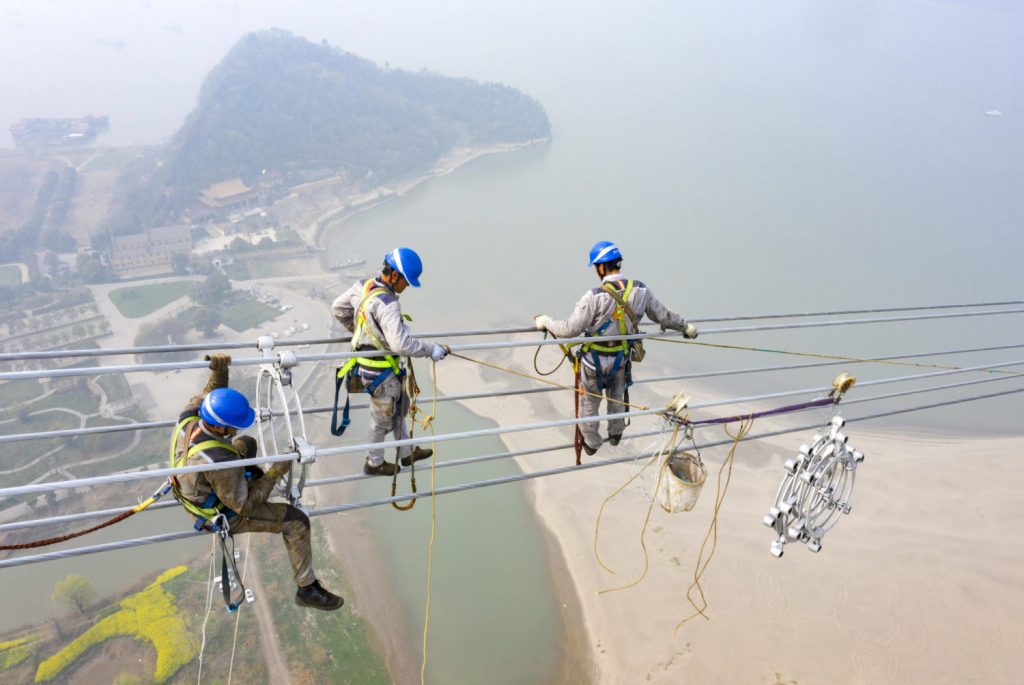
These three overhead line workers should definitely not be afraid of heights when they install a new power line that spans the Yangtze River in the eastern province of Anhui. Once in operation, the project is expected to supply more than 31.2 billion kWh of power per year.
Covid is currently rampant in China – at least according to the standards of the People’s Republic. Since the original outbreak in Wuhan more than two years ago, infection numbers in China have not been this high. Several cities of millions have been placed under lockdown, and schools have been closed. Starting March 21, international flights to Shanghai will be diverted to other regions for the next six weeks. Omicron is the decisive test for China’s Zero-Covid policy.
In today’s issue, Finn Mayer-Kuckuk analyzes the causes and effects of Hong Kong’s high number of deaths. The high mortality rate can mainly be attributed to the low vaccination rate among the elderly. This conclusion is a red flag for Mainland China. Many elderly Chinese lack sufficient immunization. And China’s vaccines are not effective enough against the Omicron variant. This is partly due to Beijing’s rejection of foreign mRNA vaccines. Will there now be a change in thinking?
The People’s Republic is striving for as much independence as possible when it comes to securing a stable food supply. Xi Jinping has repeatedly warned that the global market could not feed 1.4 billion people. Nevertheless, China obtains more than five percent of its own grain production from Ukraine. But it is not only the war that worries Beijing. Ozone pollution and climate change are also affecting its food production, writes Ning Wang.


German virologist Christian Drosten considers the current situation in Hong Kong highly interesting from a scientific point of view. In hardly any other highly developed, statistically well-monitored region with a solid healthcare system is the vaccination rate among elderly citizens this low. Whereas in Germany or Japan more than 90 percent of its oldest citizens are vaccinated, the rate in Hong Kong at the beginning of the Omicron wave was only 34 percent – for the first vaccination. Only a little over 20 percent are fully vaccinated, let alone received the second jab. As a result, one in twenty infected Hong Kong residents is currently dying.

For Drosten, the situation in Hong Kong is particularly telling because it provides insight into the Omicron variant of the pathogen. In the beginning, it was not entirely clear: Is it really less dangerous? Or is it less lethal in South Africa and Europe than previous variants because it has hit a population with adequate basic immunity in vulnerable groups?
Data from the Far East now give Drosten the answer: “Hong Kong shows as expected: Omicron is not mild among unvaccinated elderly.” These are further data points that debunk the myth of the friendly Covid variant. Indeed, younger people, in particular, tend to get less sick from Omicron. But for the unprotected elderly, an infection is dangerous. The fact that we are not currently experiencing overwhelmed hospitals in Germany like in Hong Kong, is not because of the supposedly harmless Omicron. It’s because of vaccinations.
But the data from Hong Kong is not only interesting for Germany. They are also a warning sign for Mainland China, because Omicron is currently gripping its population (China.Table reported). And only about 50 percent of Chinese over 80 are fully vaccinated. They have also not received highly effective mRNA vaccines, but less effective inactivated vaccines (China.Table reported). In addition, in some cases, vaccinations were administered several months ago. We now know that protection decreases rapidly. This means that China’s population is similarly vulnerable as Hong Kong’s.
But so far it is Hong Kong that is becoming the textbook case of a failed pandemic policy. And this is true both from the perspective of the People’s Republic, with its Zero-Covid approach, and from the perspective of European countries, with its ongoing contagion. Strict Zero-Covid has left Hong Kong with a population that barely perceived the virus as a threat, but in fact, has little immunity. While the government has always stuck to Zero-Covid and formally has done everything right (China.Table reported). But Omikron was just too contagious for a tendentiously carefree population.
But the biggest failure is the unsuccessful vaccination campaign. While the middle-aged groups were convinced to take the jab, the elderly, of all groups, remained skeptical. Yet they are the ones to whom Omicron continues to pose a risk. As a result, Covid mortality is now higher in Hong Kong than it has ever been in the UK. The mortality rate in relation to population exceeds that of previous peak countries such as Italy, Portugal, and Namibia at the height of their respective worst waves.

British data journalist John Burn-Murdoch primarily compares Hong Kong to other tightly governed Asia-Pacific countries, rather than to Covid-negligent Europeans. He sees a tragedy in the numbers. While South Korea, Japan, Singapore, and New Zealand have gotten through the pandemic with almost no deaths, Hong Kong is now experiencing a surge in deaths. And all because of a lack of vaccinations. Yet it is usually smaller administrative units that achieve effective vaccination results.
There is only one possible conclusion for China: It cannot do without a new vaccination campaign. Either with an updated inactivated vaccine – or with mRNA. Players on the stock markets apparently had a similar train of thought over the past few days. Biontech and Moderna shares surged by a fifth. Biontech already has contracts with the Beijing-based Fosun Group. However, these have not yet materialized (China.Table reported). The development of the company’s own vaccine is only making slow progress. This is hardly surprising, as the technology is new, revolutionary, and difficult to control. This could very well now lead to a change in thinking. Biontech could sell licenses for several billion doses to China, after all.
In the short term, Beijing will therefore suppress its current outbreaks with tried-and-tested means – no matter the cost. After all, freedom from Covid is currently the kind of freedom that the government can offer its people. An uncontrolled outbreak would result in a historic loss of face. The hoped-for normalization after the Olympics will not happen after all.

China has always been concerned about its food supply. Over the past few years, Xi Jinping has regularly urged vigilance despite good harvests. Food self-sufficiency is high on the agenda of political leaders (China.Table reported). Russia’s invasion of Ukraine also affects one of the People’s Republic’s largest agricultural trading partners and is likely to cause more headaches in Beijing’s. This is because food supply is at risk on multiple fronts.
China has only ten percent of the world’s agricultural land, but has to feed more than 20 percent of the global population with it. Despite the geographical limitation, the People’s Republic is one of the world’s largest food producers. For example, production of cereals, including corn and rice but excluding pulses and potatoes, was 632 million tons, up by 2.6 percent from the previous season. Wheat production also increased by two percent to 136 million tons, more than any other country in the world. But several factors threaten the productivity of arable land.
Apart from climate change (China.Table reported), air pollution is also negatively affecting crop yields in the People’s Republic. A recent study shows that burning fossil fuels increases the concentration of ground-level ozone, which, in turn, damages crops. The authors of the study estimate that ozone pollution reduced wheat yields by 33 percent between 2017 and 2019. Harvests of other staple crops, such as corn and rice, have also declined as a result of ozone pollution. The authors estimate that the relative yield decline of wheat (33 percent), rice (23 percent) and corn (9 percent) in China, Japan and South Korea results in $63 billion in crop damages annually. An international team of scientists came to this conclusion after analyzing data on ozone concentrations above the surface between the years 2017 and 2019.
According to study author Zhaozhong Feng of the Nanjing University of Information Science and Technology, surface ozone concentrations in China have increased by about five percent every year. “Such a rapid increase in surface ozone has increased the ozone risk to crop yields,” Feng said at the presentation of the paper’s findings.
“Ground-level ozone is formed by air-chemical processes when the following ‘ingredients’ combine: nitrogen oxides, hydrocarbons and sunlight. Combustion-engine vehicles are an important source of both nitrogen oxides and hydrocarbons,” says Astrid Kiendler-Scharr, Institute Director for Energy and Climate Research at Forschungszentrum Julich. “Since ozone is not directly emitted and is formed from these precursors, reducing ozone pollution requires reducing the emission of precursors,” Kiendler-Scharr told China.Table.
China lost $52 billion worth of wheat and rice crops annually from 2017 to 2019 from ozone pollution in the country alone, when in fact, it could harvest 20 percent more wheat and 10 percent more rice if the concentration of ground-level ozone were cut by half. However, even though Beijing has been working hard to reduce air pollution in recent years and has made good progress (China.Table reported), ground-level ozone concentrations have increased.
“The Chinese government is already working on a systematic plan to reduce surface ozone concentrations,” Feng told Sixth Tone, without going into details. Last November, the State Council pledged to reduce the amount of volatile organic compounds mainly emitted by the petroleum and chemical sectors, as well as nitrogen oxides, by at least 10 percent compared to 2020 levels by 2025 to halt the rise of ground-level ozone pollution.
However, Chinese, American and scientists from Forschungszentrum Julich have already shown in 2018 that China is a global “ozone hotspot“. The institute analyzed the world’s most comprehensive database of ground-level ozone readings of all available data since 1975.
“In the assessment report of the Intergovernmental Panel on Climate Change (IPCC), we look at both how air pollutants affect climate change and the extent to which air pollution issues change as climate change increases,” says Kiendler-Scharr, who is also lead author of the 6th IPCC report. For China, she predicts that as temperatures rise, ground-level ozone pollution will increase. “The higher the temperature shift, the greater the increase in ozone will be.”
Recently, China has been buying massive amounts of grain on the global market to meet its demand for wheat, corn and rice. Only at the beginning of the year did the prices for corn, rice or wheat rise sharply. Russia’s attack on Ukraine has increased prices even further. As the German news magazine Der Spiegel reported, China is currently even withholding a report from the UN’s Food and Agriculture Organization (FAO) about a possible imminent food crisis. The reason: FAO Secretary-General Qu Dongyu is Chinese. The government in Beijing does not want to stir up even more unrest on the global grain markets, speculates Der Spiegel.
As early as last summer, the United Nations food agency warned that the price of food imports for low-income countries could rise by as much as 20 percent before the end of 2021. China was not directly named as a cause of the rising prices. However, it is clear that the People’s Republic played a large part.
This is because Beijing already began filling up its granaries some time ago. According to calculations by the US Department of Agriculture, China will store 69 percent of the world’s corn reserves, 60 percent of rice reserves and 51 percent of wheat reserves in its strategic state reserves by the middle of this year.
Just one day after the National People’s Congress began two weeks ago, state and party leader Xi Jinping stated that China could not rely on international markets to ensure food security. Thus, China’s filled reserves also serve as a safeguard against future uncertainties and fluctuations on the international market.
This step is proving to be farsighted. This also became clear at this year’s National People’s Congress. There, China’s Minister of Agriculture Tan Renjian warned that his country is threatened with a poor harvest of winter wheat (China.Table reported). Beijing itself guards the exact volume of its strategic reserves like a national secret. But most recently, a high-ranking official had to reveal that the country’s wheat reserves were still sufficient for another year and a half.
China has supplied liquefied natural gas (LNG) from the United States to Europe. Unipec, the trading arm of China’s state-owned oil and gas company Sinopec, resold three shipments to ports in Europe and turned a profit, Bloomberg reports.
The resale of gas to Europe reveals the impact of high energy prices on global trade flows. This is because China is now the largest importer of LNG gas. The People’s Republic’s gas demand is also rising. LNG is expected to play a greater role in the medium term to reduce coal consumption and achieve the People’s Republic’s climate targets.
Last week, natural gas prices in Europe rose to a new high. The cause is uncertain supplies from Russia. The price increase prompted Unipec traders to turn away from the lower-priced Chinese market, according to Bloomberg. This is particularly surprising given that Beijing had recently ordered importers to secure imports of energy commodities and food (China.Table reported). nib
Following Russia’s invasion of Ukraine, more and more Taiwanese citizens are ready to defend their country in the event of an invasion. This is according to a new study by the Taipei-based Taiwan International Strategic Study Society. 70.2 percent of the 1,076 surveyed stated that they were willing to defend the self-governing island from an attack from mainland China. The last comparable study was conducted in late December. At that time, only 40.3 percent of respondents declared their will to fight.
The survey also reflects the decline in confidence in the United States. While 55.1 percent of respondents in October 2020 still believed the US would come to Taiwan’s aid in an emergency, only 42.7 percent still believe this now. At the same time, more citizens than ever were in favor of a general overhaul of the army reserve and an expansion of the basic military training already in place.
The United States – Taiwan’s informal ally – had repeatedly urged Taiwan to revise its conscription system to better prepare the island for a possible Chinese assault. The government of President Tsai Ing-wen is currently considering extending military service for men between the ages of 18 and 38 from four months to at least one year. Currently, military service in Taiwan is divided into two phases for all drafted men: Five weeks of basic training in field camps are followed by eleven weeks of advanced training in respective military units. fpe
Saudi Arabia and China are currently in “active talks” to settle oil sales in yuan instead of US dollars in the future, according to a Wall Street Journal report. About 80 percent of global oil sales are currently denominated in dollars. Oil imports in the Chinese currency could weaken the role of the dollar and thus US political influence in the long term.
China currently buys more than 25 percent of Saudi Arabia’s oil exports. According to data from China’s Customs Administration, the country was China’s top crude oil supplier last year with 1.76 million barrels per day, followed by Russia with 1.6 million barrels.
For well over six years, Beijing has been pushing to set oil contracts with Saudi Arabia in yuan. Recent developments have accelerated as the Saudis have become increasingly displeased with US security policy in the region, writes the Wall Street Journal. Examples include the lack of US support for Saudi intervention in the civil war in Yemen and Biden’s willingness to reach an agreement with Iran over its nuclear program. Many Saudis also considered the US withdrawal from Afghanistan last year to be rushed.
A senior US official cited by the Wall Street Journal called the idea that the Saudis might trade oil in yuan “not very likely.” In the past, the Saudis have repeatedly eyed the possibility of moving away from the dollar whenever there has been tension between Washington and Riyadh. Saudi Arabia has traded its oil exclusively in US dollars since signing a deal with Nixon in 1974. fpe
For the first time in over 20 years, China’s two major development banks have not allocated money for overseas energy projects in 2021. That is according to a Boston University study. Over the past two decades, the China Development Bank (CDB) and the Export-Import Bank of China (Exim) have been among the largest bilateral lenders for power plants and energy infrastructure abroad.
Since 2000, they have extended $234 billion in loans to foreign governments or state-owned enterprises in the energy sector. Since 2016, $75 billion have been granted alone, far surpassing World Bank lending. Since then, however, approvals have declined rapidly.
As recently as September 2021, Xi Jinping announced that China would no longer finance the construction of coal-fired power plants overseas. The People’s Republic was the last major backer of such projects. Boston University researchers speculate that China will rely more on direct investment rather than loans for energy projects. China has already scaled back its foreign lending activities.
Beijing fears a “creditor trap” (China.Table reported), as many loan-financed projects are not generating profits and repayment is uncertain. Researchers also believe it is unlikely that China will abandon its leadership role in global energy financing. They believe that an increase in financing can be expected again in the future. nib
China’s Ministry of Industry has granted Evergrande New Energy Vehicle Group permission to sell EVs. Two models of the subsidiary of the heavily indebted real estate developer Evergrande have received official approval. They may now be sold under the brand name Hengchi, as reported by the business portal Caixin.
Evergrande NEV has yet to sell a single car. The company’s lofty plans have suffered repeated setbacks. Some analysts speculate that the plans to expand into the auto sector are partly to raise funds for the troubled parent company, Caixin reports. Evergrande planned to invest up to seven billion US dollars in car manufacturing. Industry insiders say it will not be easy for Evergrande to gain a foothold in China’s already crowded EV market. nib


Sinolytics is a European consulting and analysis company specializing in China. It advises European companies on their strategic orientation and concrete business activities in the People’s Republic.

Shahnura Kasim spends a lot of time on social networks. TikTok, Instagram and the like are popular meeting places for young people. Kasim is 19 years old, lives in Germany and is currently studying for her Abitur (high school diploma). Like many of her peers, she posts diligently on social media and has already gained almost 14,000 followers in the battle for subscribers.
But instead of posting funny stories from her everyday life or selfies of her prettiest smile, the young woman is drawing attention to the fate of the Uyghurs in Xinjiang in northwestern China. Kasim wants to raise awareness about what is happening to the largely Muslim population group in the Autonomous Region of the People’s Republic. It is a tragedy that she believes is still not receiving enough attention.
Anyone familiar with China knows that the Uyghurs are subject to severe human rights violations. But many young people in Germany, to whom China is a distant cosmos of its own, are not yet aware of this. It is precisely these people that Kasim wants to reach with her posts on TikTok.
And raising awareness is urgently needed, she tells China.Table. Especially in schools. But she falls on deaf ears there. “In the senior grades, we spend half a year learning about National Socialism. Why can’t we find time for a two-hour lesson on current events that show parallels?” she asks. Indeed, numerous democratic governments, parliaments and politicians around the world refer to what is happening in Xinjiang as genocide.
More than one million Uyghurs are being held in internment camps, where their identity is to be sinicized by any means necessary. According to dozens of eyewitnesses, torture and beatings are common. Kasim also has relatives in Xinjiang who are imprisoned or possibly dead. She doesn’t know for certain, because contact broke off years ago.
In 2019 she received news that her grandmother is in a re-education camp and that her aunt was missing. Her uncle probably died in one of these camps. She doesn’t know the details. But for Kasim, that was the catalyst to turn to social media to raise public awareness about human rights crimes in Xinjiang. The reactions startled her: “Many people wrote me that they had never heard of it. That they didn’t even know that an ethnic group of Uyghurs existed.”
Some of her videos receive tens of thousands of hits. In some of them, Kasim uses stylistic means that are tailored to the attention span on social media: short messages, accompanied by facial expressions or music. She dances and smiles, while short texts flicker across the screen that tell about the misery of the Uyghurs.
Before the Beijing Olympics began in February, Kasim uploaded a video asking her viewers to dance with her if they were in favor of a diplomatic boycott of the Olympics. Instead of providing extensive details about the situation in Xinjiang, she usually shares short slogans that are meant to encourage her audience to inform themselves about the issue. Sometimes, however, she also tells about the fate of her family and tries to fill in gaps in knowledge and clear up prejudices.
Kasim and her siblings were born and raised in Germany. Back in the 1990s, Kasim’s father fled the oppression of the Chinese government, which at the time was still largely ignored by the world public. That is changing, but not fast enough in Kasim’s eyes. She becomes annoyed when she reads or hears that the oppression of Uyghurs is a reaction by the Chinese government to Uyghur terrorist attacks. “The oppression has been going on for decades. The terrorist attacks were a reaction to that,” she laments. Kasim fears that the media and politicians are falling into the trap of Chinese propaganda and are adopting its narrative of the situation.
She wants to see stricter criticism of the Chinese government and economic sanctions from politicians. The frequent debates in the Human Rights Committee of the German Bundestag, the upcoming implementation of supply chain laws against forced labor, or the EU sanctions against Communist Party officials are not sufficient, she thinks. Germany must recognize the human rights violations in Xinjiang as genocide based on its own history alone, she demands. Just as the US and British governments have done, or most recently the French National Assembly.
She has had little contact with her family in China in recent years. “We were never allowed to speak openly to our relatives,” she says. “My mother always said, watch your mouth. Don’t mention China.” To this day, Kasim is burdened by the fact that she doesn’t really know her family.
But giving up is out of the question. The fact that her activism in Germany could hurt her family’s situation in China is something she has to accept of necessity. “We can no longer be selfish. If I remain silent, and others also remain silent, then we will soon no longer exist.” Then, Kasim believes, there would soon be one less people, one less culture, one less language. Lisa Winter
Freda Wang has been appointed Regional President for China and Asia Pacific at car manufacturer Aston Martin Lagonda. She succeeds Michael Peng, who is now Executive Vice President for the region. Wang previously worked at Mercedes-Benz for more than ten years, most recently as Vice President of National Sales in Canada.
Chen Xudong will become General Manager of IBM China. After 24 years, Chen is leaving Lenovo Group, the world’s largest manufacturer of personal computers, where he most recently served as Senior Vice President.

These three overhead line workers should definitely not be afraid of heights when they install a new power line that spans the Yangtze River in the eastern province of Anhui. Once in operation, the project is expected to supply more than 31.2 billion kWh of power per year.
